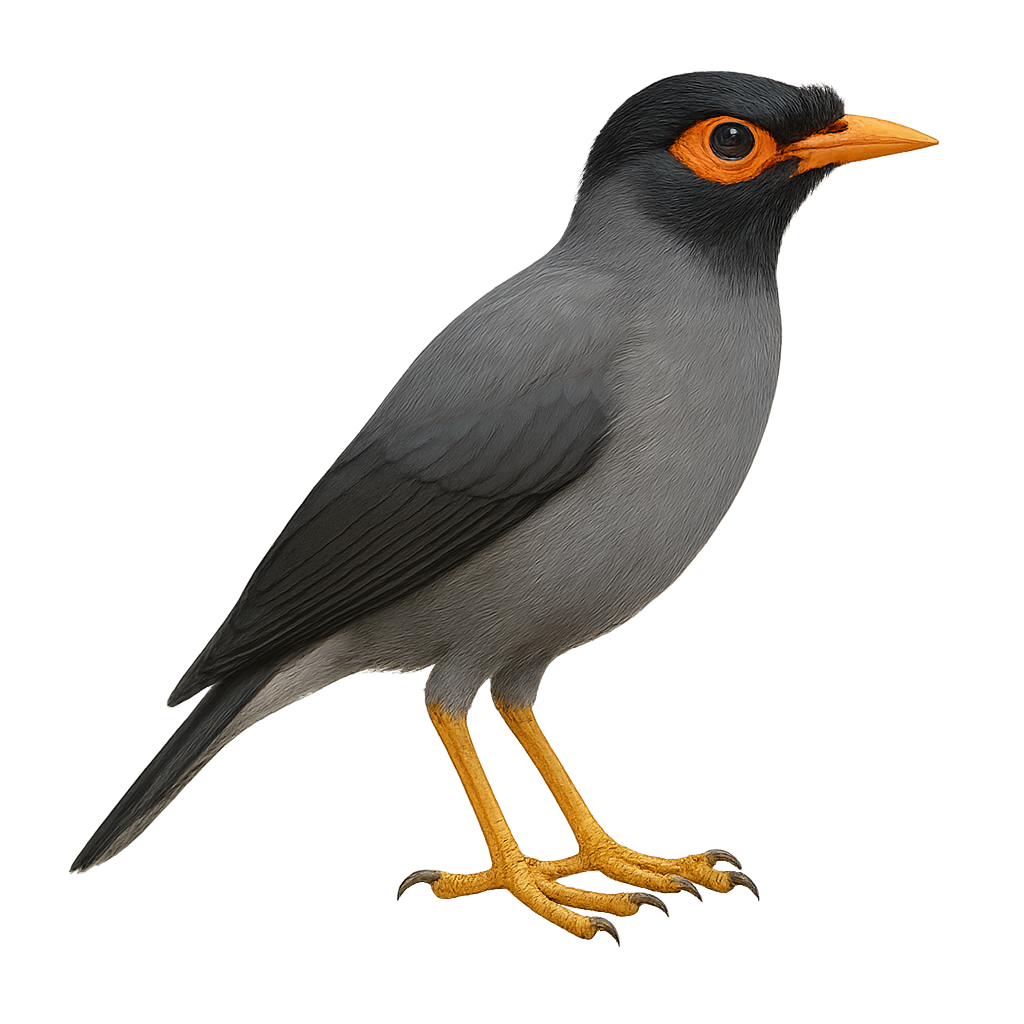Your wildlife photography guide.
Explore the bank myna in detail, study its behavior, prepare your shots.
Where to observe and photograph the bank myna in the wild
Learn where and when to spot the bank myna in the wild, how to identify the species based on distinctive features, and what natural environments it inhabits. The WildlifePhotographer app offers tailored photography tips that reflect the bank myna’s behavior, helping you capture better wildlife images. Explore the full species profile for key information including description, habitat, active periods, and approach techniques.
Bank Myna
Scientific name: Acridotheres ginginianus

IUCN Status: Least Concern
Family: STURNIDAE
Group: Birds
Sensitivity to human approach: Tolerant
Minimum approach distance: 5 m
Courtship display: March to April
Incubation: 13-15 jours
Hatchings: March to May
Habitat:
open areas, cultivated fields, villages
Activity period :
Primarily active during the day, with peak activity in the morning and late afternoon.
Identification and description:
The Bank Myna, or Acridotheres ginginianus, is a medium-sized bird belonging to the Sturnidae family. It is primarily found in the Indian subcontinent, where it frequents open areas, cultivated fields, and villages. Its plumage is generally gray with metallic sheen, and it features black patches on its head and wings. This bird is known for its sociability and adaptability to various environments, making it common in human-inhabited areas. The Bank Myna primarily feeds on insects, fruits, and seeds. It is often observed in groups, which helps it protect against predators.
Recommended lens:
400 mm – adjust based on distance, desired framing (portrait or habitat), and approach conditions.
Photography tips:
To photograph the Bank Myna, it is advisable to use a 400mm or longer telephoto lens to capture detailed images without disturbing the bird. Look for open areas or cultivated fields where these birds are often active. Morning or afternoon light is ideal for capturing shots with beautiful color tones. Be patient and discreet to observe their natural behavior, especially when they are feeding or interacting in groups.
The WildlifePhotographer App is coming soon!
Be the first to explore the best nature spots, track rutting seasons, log your observations, and observe more wildlife.
Already 1 430 wildlife lovers subscribed worldwide

